Coliform Bacteria and Water Testing Guidelines
By Dan DeBaunShare
On occasion, we have Berkey customers who are interested in testing their drinking water. While a TDS meter measuring for total dissolved solids is a quick and easy start, it is limited in scope lacking detail, and more importantly does not address contaminants such as chemicals and bacteria. For this reason, customers may look to other tests such as Coliform testing. In this article we provide guidelines and information on Coliform bacteria testing that we hope are found helpful.
How to Collect and Handle a Water Sample:
Proper collection and handling of a water sample is critical for a meaningful water test. Sample containers should always be obtained from the testing laboratory because containers may be specially prepared for a specific contaminant. Sampling and handling should be followed carefully and water samples for bacteria tests must always be collected in a sterile container.
- Run water through the filter for one hour to flush out stale water and bring in fresh water.
- Sterilize the filter outlets by carefully wiping them with an alcohol swab. Do not touch or contaminate the inside of the sample container, bottle or cap.
- Carefully open the sample container and hold the outside of the cap.
- Place the sample container inside the lower chamber directly under a filter and collect the sample from the drip water.
- For this procedure you may find it helpful to set the sample container on top of an upside down coffee cup placed inside the lower chamber.
- Do not obtain the sample from the spigot as it may be contaminated from handling and use.
Note: Under ideal conditions, some bacteria can double in quantity every twenty minutes. Under these conditions one microbe could potentially multiply to over one million microbes in about four hours. It is critical, therefore, that you refrigerate the sample and transport it to the testing laboratory within six hours (in an ice chest). Do not deliver the sample to a lab on Friday as it may not be tested until the following Monday. Mailing bacteria samples is not recommended because laboratory analysis results are typically unreliable.
Testing for Coliform Bacteria:
Direct testing for pathogens is very expensive and impractical, because pathogens are rarely found in waterbodies. Instead, monitoring for pathogens uses "indicator" species—so called because their presence indicates that fecal contamination may have occurred. The four indicators most commonly used today by both volunteer and professional monitors—total coliforms, fecal coliforms, E. coli, and enterococci—are bacteria that are normally prevalent in the intestines and feces of warm-blooded animals, including wildlife, farm animals, pets, and humans. The indicator bacteria themselves are not usually pathogenic. Even though fecal coliform bacteria have some deficiencies when it comes to being a "perfect" indicator, they are generally considered the best available indicators of contamination at the present time.
Total coliforms, fecal coliforms, E. coli, and enterococci are easy to grow in a lab, and all will be present in large numbers if recent fecal contamination has occurred. Unfortunately, one problem with the indicators is the question of source. All the indicators can come from animals and some can also come from plants or soil. Another problem is that none of the indicators accurately reflect the potential for human health effects, though some do a better job than others. Because of these and other complications, microbiologists are still looking for better indicators. In the meantime, volunteer monitors and public health agencies alike must do their best with the presently available indicators.
The above information was gleaned from the EPA’s web site at https://www.epa.gov/owow/estuaries/monitor/chptr17.html Entitled: Chapter 17: Bacteria—Indicators of Potential Pathogens
Notes on Coliform Bacteria:
Coliform bacteria can be found virtually everywhere - in soil, on skin, on animals, insects, in lakes and rivers, etc. Many Berkey customers who are interested in this testing are so because they are concerned about coliform in well water. Coliform bacteria are indicator organisms, which are used, in water microbiological analysis. These indicator organisms may be accompanied by pathogens (i.e., disease-causing organisms). The presence of coliform bacteria in drinking water is generally a result of a problem with water treatment or the pipes which distribute the water, and possible contamination by disease-causing microorganisms although the coliform themselves are not harmful. Coliform bacteria are not pathogenic (disease causing) organisms but are a natural part of the microbiology of the intestinal tract of warmblooded mammals, including man. Coliforms, rather than the actual pathogens, are used to assess water quality because they can be easily detected and, since they are non disease causing, they pose less risk to laboratory technicians. The total coliform group is relatively easy to culture in the lab, and therefore, has been selected as the primary indicator bacteria for the potential presence of other disease causing organisms.
When coliforms are present in unfiltered raw water, it is presumed that the larger disease causing organisms (pathogens) accompany them. This presumption however, is fallacious with respect to removing pathogens by way of filtration. During the filtration process larger pathogenic bacteria (see table below) can be removed while smaller non-disease causing (hetrotrophic) bacteria pass through the filtration system. When this happens, the presence of the smaller hetrotrophic bacteria does not indicate the presence of any larger pathogenic organisms.
Note: Total coliform bacteria are a collection of relatively harmless microorganisms. A specific subgroup of this collection is the fecal coliform bacteria, the most common member being Escherichia coli. These organisms may be separated from the total coliform and are associated only with the fecal material of warm-blooded animals. Fecal coliforms or E-Coli, is a particular type of coliform bacteria. Their presence in drinking water is more serious than other coliform bacteria because they are disease causing, and also indicate that drinking water has been contaminated by sewage or animal wastes that may contain other disease causing bacteria.
Testing Methods:
Approved tests for total coliform bacteria include the membrane filter, multiple tube fermentation, MPN and MMO-MUG ("Colilert") methods. The membrane filter method uses a fine porosity filter, which can retain bacteria. The filter is placed in a petri (culture) dish on a pad with growth enrichment media (mEndo) and is incubated for 24 hrs at 35 degrees C. Individual bacteria cells, which collect on the filter, grow into dome-shaped colonies. The coliform bacteria have a gold-green sheen, and are counted directly from the dish. Since some other bacteria may develop a similar color, a confirmation test
using more specific media is required. The confirmation procedure requires an additional 24 to 48 hrs to complete the test for suspected positive total coliform tests.
Wilkes University Center for Environmental Quality GeoEnvironmental Science and Engineering Department
* Dimension Table of Various Pathogenic Microbes:
• Legionella ~0.7X0.5
• Enterococcus Faecalis ~1.0 micron
• Salmonella Typhi ~1.0 micron
• Pseudomonas Aeruginosa ~1.2 X 0.5 microns
• Escherichia coli ~1.4 X 0.5 microns
• Vibrio Cholera ~1.45 X .45
• Shigella Sonii ~1.6 X 0.4 microns
• Cryptosporidium Oocyst ~3.0 microns
• Giardia Lamblia ~10.0 X 8.0 microns
Note: Black Berkey purification elements have been tested with over one billion Ecoli microbes per liter (lawn growth). This contamination level is greater than 10,000 times the colony formation (number of pathogens) typically used when testing a filtration element for its ability to remove E-coli. The results showed no detectable pathogens present within the filtered water (effluent). The water was then incubated. Again, no pathogens propagated and none were detectable when inspected under an electron microscope.
-
Regular price From $302.00 USDRegular priceUnit price / per
-
Regular price $234.00 USDRegular priceUnit price / per
-
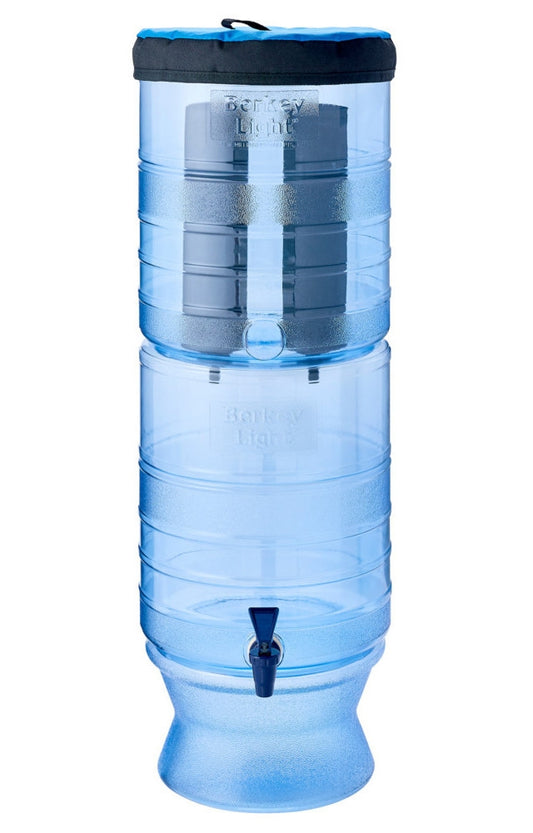
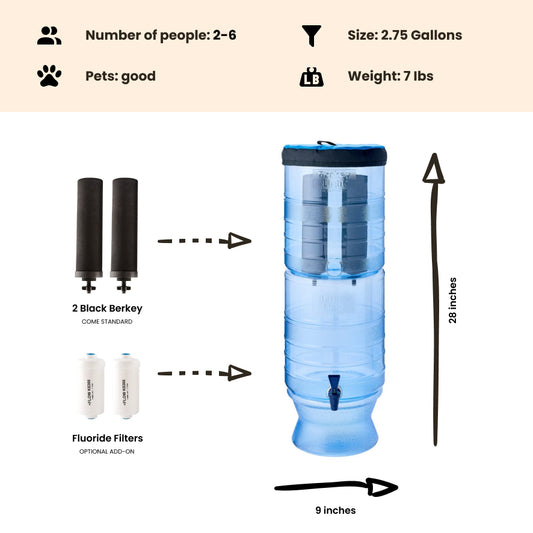 Sold outRegular price From $305.00 USDRegular priceUnit price / per
Sold outRegular price From $305.00 USDRegular priceUnit price / per -
Regular price $327.00 USDRegular priceUnit price / per
-
Regular price From $367.00 USDRegular priceUnit price / per
-
Regular price From $408.00 USDRegular priceUnit price / per
-
Regular price From $451.00 USDRegular priceUnit price / per

Dan DeBaun
Dan DeBaun is the owner and operator of Big Berkey Water Filters. Prior to Berkey, Dan was an asset manager for a major telecommunications company. He graduated from Rutgers with an undergraduate degree in industrial engineering, followed by an MBA in finance from Rutgers as well. Dan enjoys biohacking, exercising, meditation, beach life, and spending time with family and friends.
~ The Owner of Big Berkey Water Filters

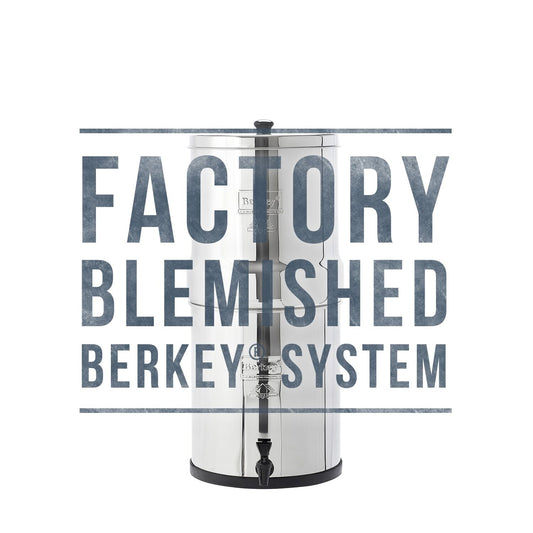
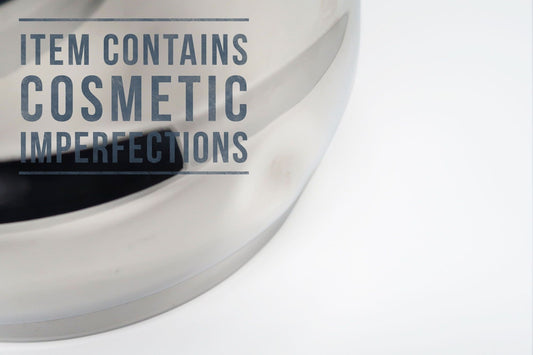








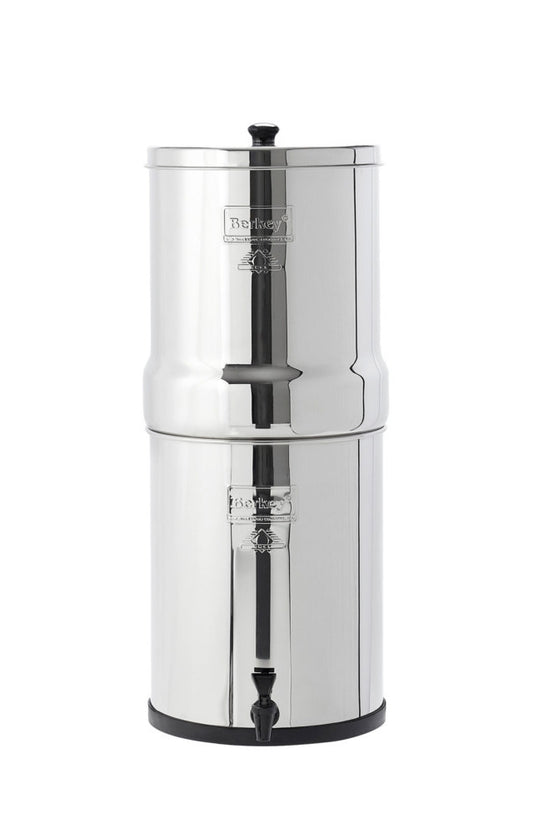
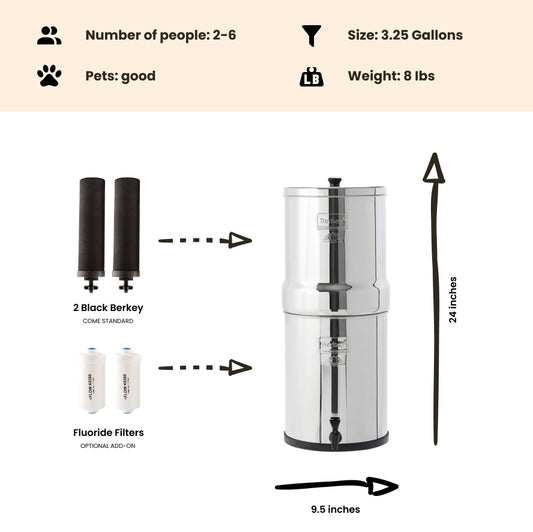



Coliform Bacteria is EVERYWHERE. Prior to buying our Berkey filter, we got our water from a natural spring in the mountains in northern California. I obtained a water sample from this location as recommended by a professional tester. I sent it FedEx next day to the tester. Coliform Bacteria was detected. This test facility also performed an E.coli test, which was negative. My brothers own a well drilling business. They informed me that 99% (not a mistype) of their newly drilled wells test positive for Coliform bacteria. They also test each new well for E.coli. I would recommend the focus of your Coliform testing be more on E.coli and other dangerous forms of bacteria.
Hi Hauns -
Thank you for that. Yes, coliform is everywhere and why we ask customers to only focus on e.coli as well.
Thanks
Dan
We recently tested our tap water, the Berkey water, and our shower water which uses the Cymbiotika water filter. The only test that came back positive for Coliform (score of 151) was the Berkey. The test did specify E-Coli which was <1 for all the sources. While the Berkey does contain coliforms, I do not think they are disease causing pathogens. It still makes me wary to drink the filtered water, especially when Berkey filters are quite pricey. My guess is the bacteria are living in the spigot of our Berkey.
I have been absent for a while, but now I remember why I used to love this website. Thank you, I’ll try and check back more often.
I cant find any test results or who did any on line???
Hi Roland -
Water testing results can be found via the links at the bottom of the <a href="https://www.bigberkeywaterfilters.com/berkey-filter-replacements-c-67/black-berkey-filters-2-p-187" rel="nofollow">black berkey filters</a> page.
Thanks
Dan